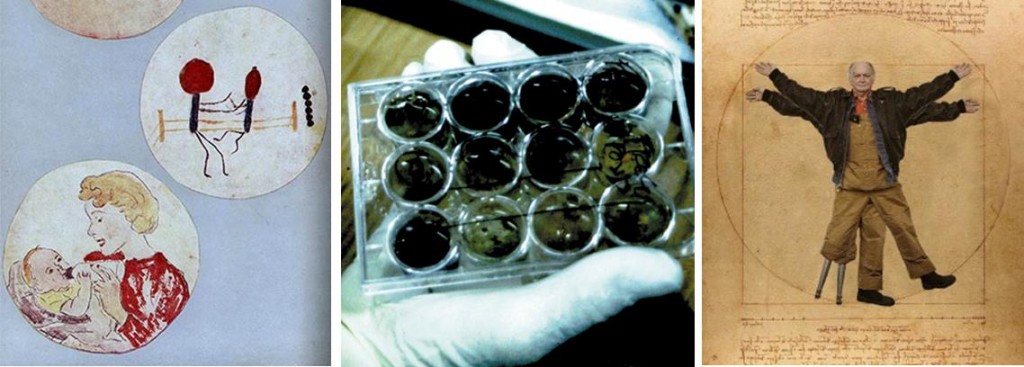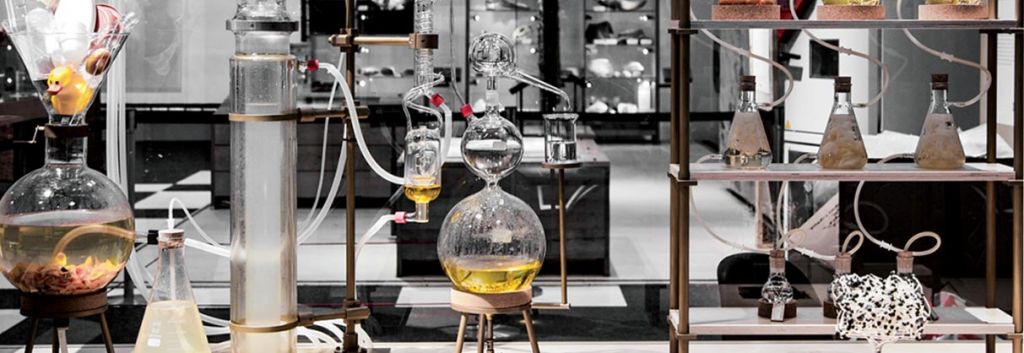BioArt is a hot interdisciplinary sub-genre springing up in Galleries all over Europe. Here is a summary of a review on the movements increasing relevance to the Biotech Industry…
 In part thanks to the Biohacking and DIY Biotech movement, accessibility to lab equipment, 3D-printers, and the popularity of the Synthetic Biology iGEM Competition, artists around the world are now tapping into Biotech to generate unique and scientifically functional art pieces.
In part thanks to the Biohacking and DIY Biotech movement, accessibility to lab equipment, 3D-printers, and the popularity of the Synthetic Biology iGEM Competition, artists around the world are now tapping into Biotech to generate unique and scientifically functional art pieces.
We’re launching a new blog series on such works and projects going on in the BioArt community in Berlin, as well as around the rest of Europe.
For example, we went to the TransArt festival earlier this month in Copenhagen, where geneticists and artists alike had come together to produce some truly wonderful exhibits (including the Drosophila ‘Danish Crown‘ printer and a flower which had been encoded by the artist’s own DNA…).

Here I’ll briefly summarise a review on the BioArt scene published yesterday in Cell – Trends in Biotechnology – which is well worth a read.
So why care about BioArt?
Artists who find themselves part of this niche have been encouraging an open dialogue between the public and scientists, particularly on controversial topics such as genetic engineering. This therefore often serves as a great interface for public engagement with ongoing developments in the Scientific field.
However, sometimes this might be used to a slight negative effect, in order to stimulate debate and question ethics of certain types of research in relation to society…
“Bioartists find these issues to be compelling subjects for their art. Yet, with or without a focus on alarming interpretations of science and technology, all BioArt raises questions about social and cultural paradigms”

Nobel Prize Winners make BioArt too…
For example, did you know Sir Alexander Fleming, the pioneer behind the discovery of Penicillin (for which he jointly won the 1945 Nobel Prize in Physiology or Medicine) also liked to make BioArt? Fleming would make ‘Germ Paintings’ on paper, which due to certain observations made using the microbes contributed to the discovery of antibiotics.
More contemporary BioArt, however, evolved from one key exhibition in the 1980’s by Joe Davis (Interview by Yale Radio here) and the Harvard geneticist Dana Boyd. They used molecular biological techniques to transform Escherichia coli into a bold artistic statement. By employing coding skills in relation to the SETI Program, they encoded a runic symbol of femininity and life into a binary image which could be seen in the bacterial culture – a project they Christened ‘Microvenus‘.

Making a Statement…
With time, also came the pieces of BioArt which inevitably became politicised due to their contraversial nature.. Davis’ Microvenus was actually a protest against ‘the censorship of radio messages sent into deep space’. Hmm. Other inflammatory topics included the use of bioactive materials, the (seemingly) persistent discussion on Eugenics, and of course Genetic engineering in general.
The New York collective ‘Critical Art Ensemble‘ (CAE) has been notorious for their challenge of biosafety protocols employed by governmental agencies, and are well known for ‘mocking’ biological warfare attempts by using shock tactics. Due to the post 9/11 paranoia, this ultimately led to the FBI mistakenly carrying out an investigation into the CAE for Bioterrorism (for which they were eventually cleared).
On the other hand, a more peaceful piece of BioArt which attempted to re-examine Biotechnology’s use of genetic materials was Deep Woods PCR in 2011. As a professor of Visual Arts, Paul Vanouse arranged buckets around a woodland campfire in the Canadian wilderness to replicate the thermo-cycle used in the polymerase chain reaction (PCR) to amplify his own DNA.

“In this century, art and science are in the process of disengaging from this legacy of separation”
This just goes to show that scientific techniques are being employed by artists from all walks of life, to convey a certain idea or open a discussion on the validity of certain scientific practices in society. And with the vast number of biotech tools and information being so freely available (at the click of the button!), we should be embracing this cultural movement.
I mean, really…it’s a great time to acquaint yourself with some BioArt…





